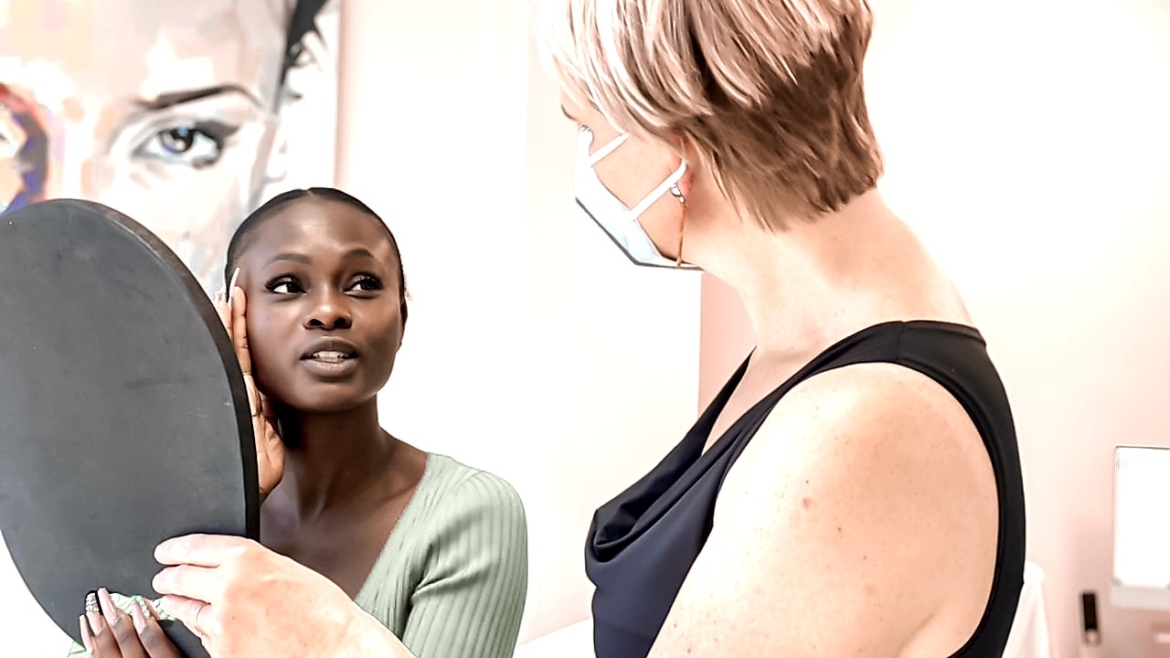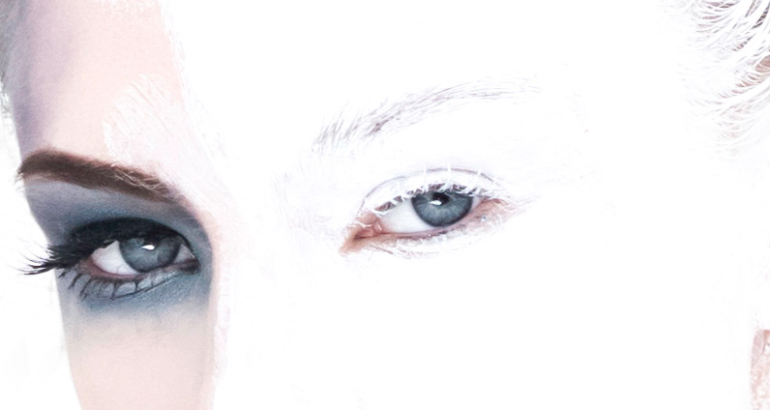DARK SKIN CONDITIONS AND TREATMENTS
By Principal Skin Specialist – Penny Jenkinson
When we look at our different skin colours and tones, it is as beautiful and diverse as our rainbow nation. It comes in all shades and colours, each having its own love language and needing its own specialised care.
People with dark skin tones, however, deal with some skin issues more commonly, such as hyperpigmentation, inflammation, sensitivity to lasers, (and more).
There are also many misconceptions about skin of colour, which is why we made it our business to discuss the world of dark skin conditions and treatments thereof. But before we can learn more about the most common skin conditions and relevant skin treatments for dark skin, it’s important to know a little something about the biology of skin of colour.
THE BIOLOGY OF DARK SKIN
The colour of all skin comes from cells called melanocytes. They produce melanosomes, packets containing the natural chemical giving your skin your colour. Studies show that all people have roughly the same number of melanocytes in skin tissue, regardless of colour. What differs is both the size and distribution of the melanosomes. The more and larger they are, the darker the skin will be.
The role of melanin is to scatter light to protect the skin from free radicals and UV radiation, so the darker the skin the more melanin is present the better the protection. At the same time, dark skin is more likely to develop pigmentation problems. Even small injuries or trauma such as paper cuts and bug bites can cause a change in skin pigment, causing it to darken known as hyperpigmentation or post-inflammatory hyperpigmentation.
When skin treatments and products are implemented incorrectly these can cause darkening of the skin leaving marks that can take years to improve. That’s whys at Dr. Nerina Wilkinson and Associates we believe in our signature skin journey which includes the preparation of the skin first and then the focus on concerns.
SKIN CONDITIONS IN DARK SKIN
PIGMENTATION AND DARK SKIN
There are many different forms of pigmented lesions in dark skin, such as Dermatosis Papulosa Nigra (wax-like raised spots), Café Au Lait, and Nevus of Ota birthmarks. It is important to make the correct diagnosis before starting any professional treatments, in order to achieve safe and predictable results.
In hyperpigmentation, the skin either produces too much pigment or the pigment is deposited deep within the skin, resulting in dark spots. When colour is lost, it’s called hypopigmentation, which results in light-coloured patches. All people with dark skin are at risk for both of these skin conditions.
Among the most common types of pigment problems in dark skin is post-inflammatory hyperpigmentation. This occurs as a result of skin injury, such as a cut, scrape, or burn. It can also occur in conjunction with inflammatory skin conditions. The darkened area of skin can take months (even years) to fade, though medical treatments can help. Treatments include fruit acid peels and needling with medical sterile active ingredients (for superficial pigment). Unfortunately, not all treatments will work for pigment in the deeper layers of the skin.
SKINCARE PRODUCTS FOR HYPERPIGMENTATION IN DARK SKIN
Daily use of a broad-spectrum sunscreen like the Heliocare 360 Gel and tinted Colorescience Flex will also help keep a pigmented area from becoming darker. Those with sensitive skin are at greatest risk for pigmentation problems. In fact, any skincare product ingredient that irritates or dries skin increases the risk.
Other products which are very important for darker skin tones are pigment inhibiting products and anti-inflammatory products such as the Mesoestetic Melan Tran3x Concentrate and Melan Tran3X Gel Cream, ZO Skin Health Brightalive, and the Neostrata Enlighten Range as these will all help to prevent the formation of pigment when the skin gets inflamed.
PSEUDOFOLLICULITUS BARBAE AND DARK SKIN
This skin condition is characterised by bumps under the surface of the skin and is often confused with acne. But the problem actually stems from ingrown hair. It most often occurs in very dark skins, due to the distinct shape of the hair follicle.
If the bumps are squeezed or manipulated in any way, they can become inflamed or infected. But even when left alone, they can be difficult to cover and sometimes be very pain full. Because this condition is often confused with acne, it’s important to have your diagnosis confirmed by a skin specialist with dark skin.
For laser hair removal, using an ND:Yag laser is ideal to treat the cause of the problem as the laser will destroy the hair follicle. However, in order to treat the discoloration as a result of ingrown hairs, treatments such as chemical peels and the correct home care are important. In other words, we need to treat the cause and not just the symptoms.
ECZEMA AND DARK SKIN
This skin condition is characterised by an itchy, red rash that comes on gradually and lasts a long time. It can be triggered by many factors including stress, extreme changes in temperature, dry skin, allergies, or irritations caused by skin care or cosmetic ingredients. When eczema occurs as the result of an inherited tendency, it is known as atopic dermatitis. When eczema occurs in those with dark complexions, it presents a two-fold problem:
- It is often misdiagnosed, leading to long periods of no treatment or the wrong treatment.
- When not treated early on, it can increase the risk of pigmentation problems.
Treatment for eczema consists of identifying and avoiding products that irritate skin. At home, the use of moisturiser along with steroid creams can make a significant difference. In-clinic we have found Dermalux LED Light Therapy to be very effective.
ACNE AND DARK SKIN
Acne can occur in any skin type, but due to its link to hyperpigmentation, it is of the greatest concern for people with dark skin. Acne develops when there is an overproduction of oil in the skin. That oil mixes with bacteria within the pores and blocks the pore openings. This causes inflammation just under the skin, which results in lesions – anything from small, discreet bumps to large cysts.
At Dr. Nerina Wilkinson + Associates, your treatment plan is designed in order to improve your skin concern, for this to happen, our main aim initially will be to prepare the skin and improve the barrier function before we can start focusing on the main concern. We do this with treatments such as our signature 3D MD PRP, the QMS Sensitive Rebalance Facial, AQ’s GFIT Treatment, and Superficial Chemical Peels. After your barrier is repaired, we can move to deeper treatments such as Medium Depth Peels and 3D Needling with sterile actives.
KELOIDS AND DARK SKIN
Any time dark skin is injured in certain areas, there is an increased risk of keloids — a scar that spreads beyond the boundary of the original injury and develops into a growth. The most common causes of keloids are cuts or burns. However, even an ingrown hair that is left untreated may result in a keloid scar eventually. The most common locations are the earlobes, chest, back, and arms. While they can develop immediately after an injury, they can also take months or even years to grow — and they can continue growing over a period of time.
Though no one is certain why keloids develop, they are thought to be linked to a defect in collagen production. Treatments include cortisone injections and removal via surgery or laser. Regardless of the treatment, keloids, unfortunately, return between 45% and 100% of the time.
EXOGENOUS CHRONOSIS AND DARK SKIN
This condition is caused by long-term use of “unlicensed” bleaching agents on the skin. Instead of lightening the skin, they eventually cause severe darkening, even more so to begin with. Unfortunately, there is no therapy to correct this condition.
Due to South African legislation, products may now not claim to lighten the skin. They may be used to brighten the complexion only. Purchasing products from illicit sources to lighten the skin often have negative consequences. So please be careful. At the end of the day, we feel that a brighter more even complexion is more attractive than a skin that has obviously been lightened.
SUMMARY
- Establishing a good skincare routine can help keep dark skin bright, supple, and clear.
- As well as performing a gentle daily routine and adopting a healthful diet, people with dark skin should aim to avoid using products that contain harsh chemicals and fragrances.
- Specific skin issues, such as acne and dark spots, can greatly benefit from a purpose-driven and individualised skin treatment plan including preventative treatments and techniques.
- To prevent the formation and worsening of dark spots and more serious health concerns such as skin cancer, we recommend that everybody use sunblock with an SPF of 50 every day.
And last, but not least – never be afraid to sparkle just a little bit more!
Contact Dr. Nerina Wilkinson + Associates on capetown@drnwilkinson.co.za to schedule your individualised aesthetic couture consultation and start your journey to your most beautiful, radiant self today.
Written by Penny Jenkinson



